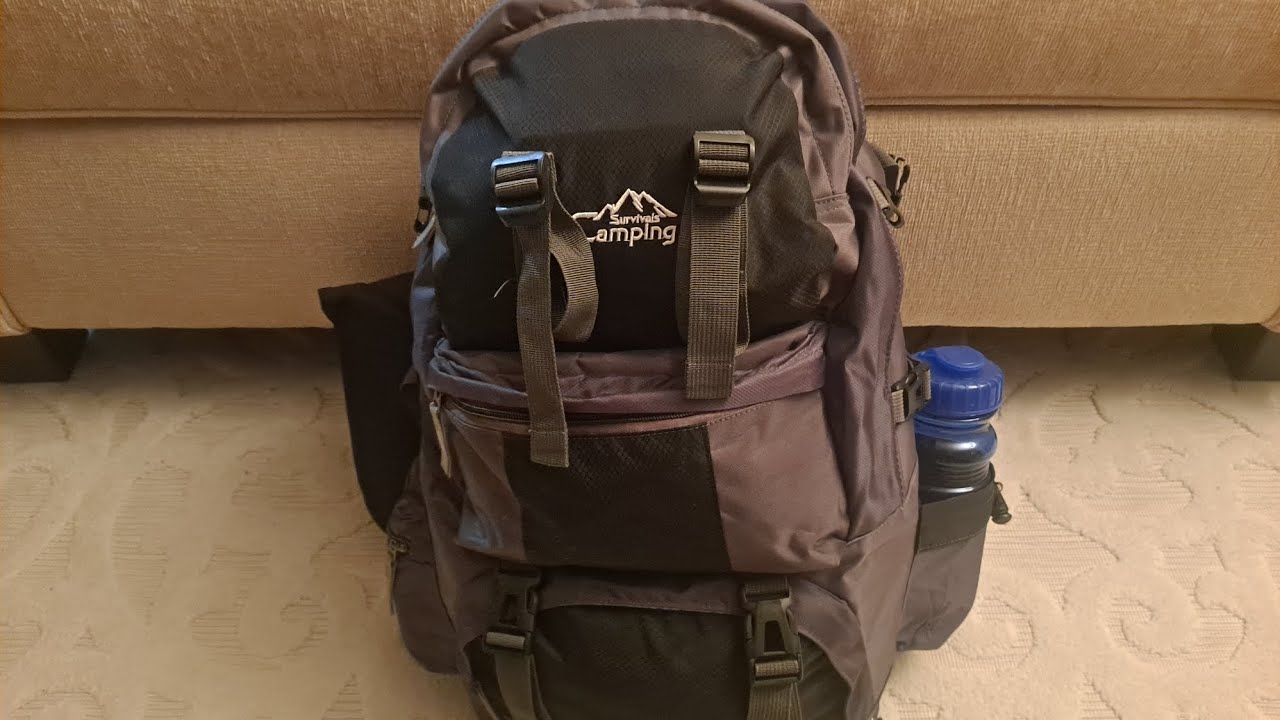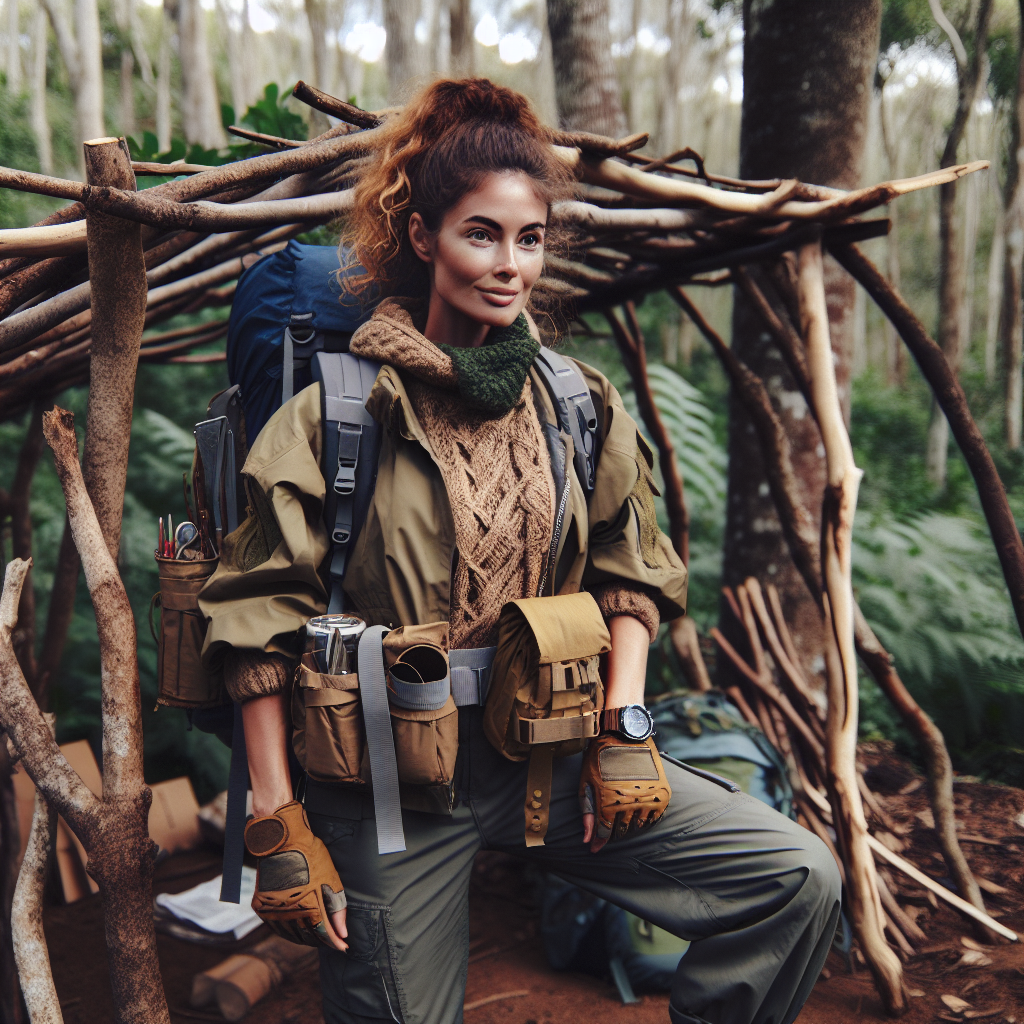Womens Preparedness
Women-Wise Hiking: How to Stay Safe on the Trails

Women-Wise Hiking: How to Stay Safe on the Trails
Hello, beautiful adventurers! I’m Jade Tripp, and today, I want to share some important insights on how we can hike safely and confidently in the great outdoors. Let’s face it—nature is a breathtaking escape, but it can also present challenges. As women, it’s essential to be prepared, stay alert, and prioritize our safety while enjoying the trails.
The Power of Preparation
Before you lace up those hiking boots, let’s talk about the importance of planning. A little preparation goes a long way in ensuring your safety. Here are some tips to get you started:
-
Know Your Route: Always select a trail suitable for your experience level. Websites like AllTrails provide user reviews and detailed information on difficulty levels. For example, if you’re in the Pacific Northwest, trails like the Rattlesnake Ledge offer gorgeous views without being overly challenging for beginner hikers.
-
Share Your Plans: Inform a friend or family member about your hiking plans. Share your itinerary, including the trail you’ll be taking, expected return time, and any emergency contacts. In the case of a mishap, having someone aware of your whereabouts is crucial.
- Carry Essential Gear:
- Navigation Tools: A physical map, compass, or GPS device can help you stay oriented. Never rely solely on your phone; battery life can be unpredictable.
- First-Aid Kit: Accidents can happen, so pack some basic first-aid supplies, including band-aids, antiseptic wipes, and any necessary medications.
- Personal Alarm or Whistle: These can be handy for deterring threats or summoning help. A small whistle can carry much further than your voice.
Stay Aware and Alert
While hiking, maintaining awareness of your surroundings is key to staying safe. Here are some practical strategies:
-
Solo vs. Group Hiking: Assess whether hiking alone or with a group is right for you. Group hikes can be empowering and enjoyable. Remember that even in a group, it’s wise to stay vigilant and discuss safety protocols beforehand.
-
Stay on Established Trails: Stick to marked paths; venturing off can leave you more vulnerable to getting lost or encountering wildlife. For example, in areas like the Great Smoky Mountains, sticking to trails helps you avoid encounters with bears or other wildlife.
- Use Your Senses: Engage all your senses. Listen for unusual noises or footsteps that may indicate someone is nearby. If something feels off, trust your instincts. It’s okay to turn back if you feel uncomfortable.
Trust Your Instincts
Your intuition is a powerful tool. If something doesn’t feel right—whether it’s the vibe of a fellow hiker or the condition of a trail—don’t hesitate to heed your gut feeling. Let’s empower ourselves with stories from real women who’ve done just that.
Take, for instance, the story of Emily, who was hiking in a popular national park. She noticed a solo male hiker who was following her a little too closely. Instead of ignoring her discomfort, she chose to make a detour and stick to a busier part of the trail. Her intuition kept her safe, reminding all of us that our instincts should never be underestimated.
Self-Defense Skills
As a self-defense advocate, I encourage all women to consider learning basic self-defense techniques. You don’t need to be a martial arts expert; simply knowing how to protect yourself can boost your confidence. Consider local classes like Krav Maga or women’s self-defense courses offered by community centers.
Here are a few simple, practical techniques that are easy to learn and can be effective in an emergency situation:
-
Vocalizing Your Intent: Use your voice to assert yourself. A firm “Leave me alone!” can deter someone who may be trying to start a confrontation.
-
Target Vulnerable Areas: If you need to defend yourself, targeting the eyes, nose, or groin can be effective for a quick escape.
- Using Everyday Items: A walking stick or your backpack can be used to create distance between you and a potential threat.
Staying Connected
In our technologically-driven world, we have tools at our disposal that can enhance our safety. Consider these options:
-
Hiking Apps: Apps like Komoot and Hiking Project allow you to share your location with trusted contacts in real time.
- Emergency Contact List: Create a list of emergency contacts and store it in your phone, along with local emergency numbers for the area you’re hiking in.
Enjoy the Journey
Finally, remember that hiking is about connection – with nature, with yourself, and often with like-minded individuals. Let’s celebrate our adventures! Whether you’re wandering through a lush forest or hiking a rocky mountain, each step should bring you joy and fulfillment.
In closing, beautiful ladies, as you venture out on the trails, prioritize your safety without letting fear overshadow your adventure. With proper preparation, self-awareness, and a little savvy, we can make our outdoor experiences not only safe but enriching.
So, grab your gear, step into the great outdoors, and embrace the adventure. Happy hiking, and stay safe out there! 🌲❤️
Womens Preparedness
BUG OUT BAG FOR WOMEN | EVACUATION | PREPAREDNESS | LONG TERM GOT TO GO BAG

Thank you for watching my video. Please Subscribe Like Share to my channel https://youtu.be/zuABiko5y40 …
source
Womens Preparedness
How Multitasking Can Help or Hinder Emergency Response

Hello, fabulous women! It’s Jade Tripp here, and today we’re diving into a topic that can undoubtedly make a difference in how we respond to emergencies—multitasking. As women, we often pride ourselves on our ability to juggle various responsibilities simultaneously. Whether it’s managing work deadlines while planning our kids’ schedules or organizing a community event, multitasking has become second nature for us. However, when it comes to emergency situations, this skill can either empower us or lead us astray.
The Double-Edged Sword of Multitasking
When you think of multitasking, you might think of being efficient and productive. Yet, in high-stress situations, our brains can become overloaded, making it challenging to focus on the most critical tasks. Let’s break this down into both the advantages and drawbacks of multitasking when it truly matters.
The Benefits of Multitasking
-
Quick Decision Making: In emergencies, time is of the essence. Girls, how many of us have been in a situation where we had to make rapid decisions? For example, consider the case of a woman named Sarah, who was at a grocery store when a sudden fire broke out. While most people stood frozen, she quickly assessed her surroundings, located her children, and ushered them towards the exit all while alerting others nearby. Her ability to multitask saw her through a critical moment.
-
Resourceful Thinking: Multitasking enables us to draw from various skills simultaneously. Just think about preparing your family for a camping trip—setting up tents, cooking, and keeping the kids entertained can require juggling many things. In emergencies, such as a natural disaster where you might need to help a neighbor while tending to your family, this resourcefulness can save lives.
- Enhanced Situational Awareness: Managing multiple tasks can heighten awareness. For instance, during an earthquake like the one that hit Napa Valley in 2014, women like me used multitasking to secure themselves, help others, and even account for pets. Training ourselves to multitask within safe environments can prepare us for real emergencies.
The Downsides of Multitasking
Despite its benefits, multitasking can also hinder our response in critical moments. Here are a few reasons why:
-
Cognitive Overload: When we attempt to do too much at once, our brains can become overwhelmed. This can lead to mistakes. For example, let’s take the story of Lily, who was making dinner while chatting on the phone when she heard a loud crash in her living room. In the chaotic rush to assess the situation, she accidentally knocked over a pot of hot water, causing a burn. Focusing on one task at a time—like ensuring her children were safe first—might have prevented the injury.
-
Compromised Focus: Our cognitive resources are finite, especially under stress. During emergencies, people sometimes lose focus and miss critical cues. Remember the freezing of the bystanders during an incident at a public park? Their attention was split, and the moments of hesitation that followed could have led to different outcomes had they acted decisively.
- Neglected Priorities: It can be easy to get caught up in less crucial tasks while ignoring what truly matters. In emergencies, we need to prioritize our safety above all. The tragic case of a mother in a bullying incident comes to mind—she was so busy filming the altercation on her phone she neglected to intervene, resulting in harmful consequences.
Finding the Right Balance
So how can we strike a balance in our multitasking abilities while remaining effective in emergency situations? Here are some practical tips that can make a world of difference:
-
Prioritize Tasks: Always remember: safety first. In case of emergencies, assess the situation quickly. Identify the immediate threats and act accordingly. Teach yourself to prioritize by practicing scenarios that might arise.
-
Practice, Practice, Practice: The more training we have, the more instinctive our responses will become. Participate in personal safety classes or emergency drills. Organizations like the American Red Cross offer courses in first aid, CPR, and emergency preparedness that can help you react faster and more efficiently.
-
Limit Distractions: When you hear an alarm or a loud noise, resist the urge to multitask. Focus on what’s essential—your well-being and that of others. Think of Jessica, a teacher who, during a lockdown drill, removed distractions and kept her students focused on safety—her calmness in prioritizing over multitasking led to reduced anxiety.
- Mindfulness Techniques: Engage in mindfulness practices to improve focus. Breathing exercises and grounding techniques can preserve your mental strength during tense moments.
Final Thoughts
Ladies, multitasking is an incredible skill we have honed, and while it can lead to efficiently managing everyday life, we must adapt our approach in emergencies. By understanding its strengths and limitations, we can cultivate a more effective and empathetic response to critical situations.
Let’s equip ourselves with the mindset and the knowledge to act in times of crisis. Remember, preparation is key, and embracing our roles as powerful, multitasking women doesn’t just mean juggling everyday tasks—it means being ready to protect ourselves and our communities, no matter the situation!
Stay strong and stay safe! 💪🌟
Womens Preparedness
Empowering Women with Essential Outdoor Survival Shelters

Empowering Women with Essential Outdoor Survival Shelters
Hello, fierce warriors! I’m Jade Tripp, and today, we’re diving into a subject close to my heart: outdoor survival shelters. As women, it’s crucial that we equip ourselves not just with knowledge, but also with the skills that empower us in various situations, especially when it comes to self-defense and preparedness in the great outdoors.
Whether you’re a weekend camper, an adventurous hiker, or simply someone who loves the beauty of nature, understanding how to create a survival shelter can be a game-changer. Let’s explore the essentials together!
Why Outdoor Survival Shelters Matter
Outdoor survival shelters can be a lifeline in emergencies, but they also instill a sense of confidence and independence in each of us. Picture this: You’re on a solo hike in the Appalachian Trail, and suddenly, the weather takes a turn, or you miscalculate your return time. Having the know-how to construct a reliable shelter could mean the difference between discomfort and safety.
Essential Types of Shelters
Let’s break down some fundamental shelter types that every woman should be familiar with:
-
Lean-To Shelter
- What is it? A simple structure that can be set up against a fallen tree or rock face, leaning against the support for a sturdy base.
- How to Build It: Start by finding two strong supports. Lay smaller branches against them at an angle, creating a roof. Use leaves, pine boughs, or any available debris for insulation and to protect you from rain.
- Real-Life Example: Sarah McLachlan, a singer-songwriter and humanitarian, once spoke about a camping trip where she had to use a lean-to shelter during an unexpected storm. She was able to stay dry and safe, allowing her to continue her journey with confidence.
-
Debris Hut
- What is it? A natural shelter made from available materials, such as branches and leaves.
- How to Build It: Create a framework with a strong central pole and lean smaller branches against it to form a roof. Pack as much debris (leaves, grass, etc.) onto the roof to provide insulation.
- Inspiration: Consider the survival story of Kelly McGonigal, psychologist and author, who found herself lost in the wild and had to build a debris hut. With determination and a little knowledge, she survived overnight until help arrived.
- Tarp Shelter
- What is it? A versatile shelter made using a waterproof tarp.
- How to Build It: Use ropes to create a high point, then drape the tarp down to the ground. This creates a protection from rain on one side while keeping airflow on the other.
- Community Tip: Many outdoor enthusiast groups, like REI workshops, offer classes on using tarps effectively. These can be fantastic places to learn among women with shared interests!
Gear That Supports Your Shelter-Building Endeavors
Having the right gear can enhance your outdoor experiences and ensure you are prepared in case you need to construct a shelter:
- Multi-tool: This handy device can assist in gathering materials and making necessary adjustments to your shelter.
- Rope/Paracord: Strong and lightweight, it’s essential for securing materials together.
- Emergency Blanket: Lightweight and compact, it can retain body heat or serve as an additional layer for insulation in your shelter.
The Importance of Practice
Just like any skill, practice is key. Create a fun outdoor day with your friends or fellow women adventurers where you simulate building shelters. It’s not just about learning, but also bonding and empowering each other.
In fact, the Women’s Wilderness Institute offers excellent programs that cater to women eager to learn outdoor skills, including shelter building! By participating, you not only sharpen your techniques but also build a community of supportive, empowered women.
Confidence Through Knowledge
Understanding how to construct outdoor shelters is not just a survival skill; it’s about embracing confidence, independence, and empowerment. The wilderness can be unpredictable, but with the right knowledge, we can tackle it head-on.
Remember, every expert was once a beginner. When you gather with other women, share stories, and support each other, you’re creating an unbreakable sisterhood united in strength.
So, let’s empower each other by learning, growing, and preparing for whatever adventures life throws our way. Together, we can conquer the world—one shelter at a time!
Happy adventuring, ladies! 🌲💪
-

 Womens Self Defense11 months ago
Womens Self Defense11 months agoNew Legislation Empowers Women to Defend Themselves
-

 Self Defense News1 year ago
Self Defense News1 year agoShe was convicted of killing her abusive boyfriend. Now a Maple Grove woman is home awaiting a new trial.
-

 Self Defense News1 year ago
Self Defense News1 year agoSelf-Defense for All: The new Gracie Jiu-Jitsu Pasadena is for everyone | Online Features
-

 Womens Self Defense1 year ago
Womens Self Defense1 year agoTop 5 Self-Defense Techniques Every Woman Should Know
-

 Womens Self Defense7 months ago
Womens Self Defense7 months agoUnderstanding State-by-State Variation in Self Defense Laws
-

 Womens Fitness1 year ago
Womens Fitness1 year agoXtreme Bodyweight HIIT (Lots of Jumping!) | Joanna Soh (Fio Series)
-

 Womens Preparedness1 year ago
Womens Preparedness1 year ago10 essential skills for surviving in the great outdoors
-

 Womens Preparedness1 year ago
Womens Preparedness1 year agoEmpower Yourself: A Guide to Female Survival Planning

